ໂດຍຄຣິດສ Grinter, ເມື່ອວັນທີ່ 19 ເມສາ, 2011
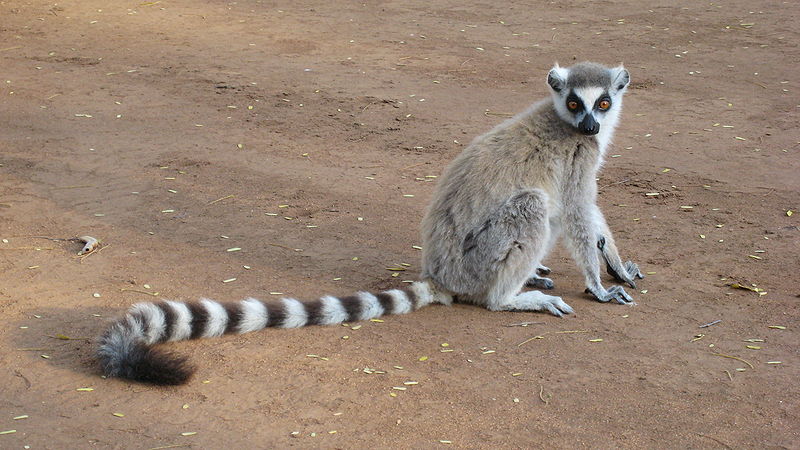 ແຫຼ່ງຂໍ້ມູນ: ວິກິພີເດຍ ມັນ turns ໃຫ້ເຫັນວ່າ Richard Branson ມີຄວາມຄິດໃຫມ່; ເພື່ອຊ່ວຍປະຢັດ lemur ວົງຫາງ (lemur Catta) ໂດຍ ການນໍາເຂົ້າພວກມັນໄປຍັງເກາະເວີຈິນໄອແລນສ່ວນຕົວຂອງລາວ. ໃນຖານະເປັນບົດຄວາມຊີ້ອອກ Branson ໃຊ້ເວລາລ້ານປອນແລະປີຂອງຄວາມພະຍາຍາມທີ່ຈະເຮັດໃຫ້ເກາະເປັນ “ເກາະທີ່ເປັນມິດກັບລະບົບນິເວດທີ່ສຸດໃນໂລກ”. ແຕ່ເບິ່ງຄືວ່າທ່ານ Branson ໄດ້ຕັດສິນໃຈປະຖິ້ມວິທະຍາສາດການອະນຸລັກແລະຂຽນມັນຄືນໃຫມ່ໃນວິທີທີ່ເປັນມິດກັບ PR.. ໃນມາ lemurs ເຖິງວ່າຈະມີຄວາມລະມັດລະວັງຂອງການປະເມີນລະບົບນິເວດຂອງຕົນເອງເພາະວ່າລາວຕ້ອງການ “…ເພື່ອສ້າງທີ່ຢູ່ອາໄສຂອງເກາະທີສອງແລະເງື່ອນໄຂຂອງ Moskito ແມ່ນສົມບູນແບບ.” ບາງທີ Branson ມີວັດຈະນານຸກົມໂລກທີ່ແປກປະຫຼາດທີ່ຄໍານິຍາມຂອງຄໍາທີ່ສົມບູນແບບແມ່ນ “ບາງສິ່ງບາງຢ່າງທີ່ແຕກຕ່າງກັນຫມົດຈາກຕົ້ນສະບັບ”.
ຕົກລົງແນ່ນອນ, ໃນຕອນ ທຳ ອິດຄວາມຄິດເບິ່ງຄືວ່າດີ – lemurs ແມ່ນໃກ້ຈະສູນພັນ, ເປັນຫຍັງຈຶ່ງບໍ່ພະຍາຍາມທີ່ຈະໃຫ້ເຂົາເຈົ້າເປັນບ່ອນລີ້ໄພທໍາມະຊາດຄັ້ງທີສອງ? ດີ, ດຣ James Lazell ຂອງອົງການອະນຸລັກໄດ້ມີ 31 ປະສົບການຫລາຍປີຢູ່ໃນຫມູ່ເກາະເວີຈິນແລະໄດ້ຊີ້ໃຫ້ເຫັນວ່າ “Lemurs ມີຄວາມວ່ອງໄວ, ຊໍານິຊໍານານ, ຮຸກຮານ, ສັດ omnivorous ທີ່ ອາດ ຈະ ມີ ຜົນ ກະ ທົບ ຕໍ່ ລະ ບົບ ນິ ເວດ ເກາະ ງ່າຍ ດາຍ ເຫຼົ່າ ນີ້. ພວກເຂົາກິນທຸກຢ່າງຢ່າງແທ້ຈິງ - ແລນ, ໝາກໄມ້, ຮາກ, ແມງໄມ້, ນົກ’ ໄຂ່.” ໂອ້ ແຕ່ຢ່າກັງວົນ, ບໍ່ມີຫຍັງທີ່ບໍ່ດີສາມາດເກີດຂຶ້ນໃນເວລາທີ່ທ່ານແນະນໍາ primates ກັບເກາະ (ແນະນຳຝູງສັດປ່າທຳລາຍລັດ Florida Key). Branson ຮູ້ວ່າ lemurs ພຽງແຕ່ຈະ “ເອົາ gecko ຄີກ” (ຄືກັບ dwarf-gecko ທີ່ຫາຍາກທີ່ສຸດ Sphaerodactylus parthenopion), ບໍ່ໄດ້ກ່າວເຖິງພວກເຂົາອາດຈະບໍ່ແຜ່ຂະຫຍາຍໄປເກາະອື່ນໆນັບຕັ້ງແຕ່ພວກເຂົາ “ຊັງການລອຍ” (ລອຍຫາງ lemur ວົງ).
ດັ່ງນັ້ນເປັນຫຍັງຫຼັງຈາກນັ້ນວົງຫາງ? ບໍ່ແມ່ນເພາະມັນເປັນອັນຕະລາຍທີ່ສຸດ (ມີ ຈໍານວນຫລາຍ ຂອງອື່ນໆ lemurs ໃກ້ຈະສູນພັນຫຼາຍ), ແຕ່ເນື່ອງຈາກວ່າມັນເປັນສັນຍາລັກທີ່ສຸດ. ນັ້ນແມ່ນສິ່ງທີ່ເຮັດໃຫ້ຂ້ອຍຂຶ້ນກຳແພງແທ້ໆກ່ຽວກັບຄວາມຄິດທີ່ໜ້າກຽດຊັງນີ້. ບໍ່ພຽງແຕ່ລາວແນະ ນຳ ຊະນິດພັນທີ່ອາດຈະຮຸກຮານເຂົ້າໄປໃນບ່ອນຢູ່ອາໄສຂອງເກາະທີ່ອ່ອນໄຫວ. – ແຕ່ຍ້ອນວ່າລາວກໍາລັງເຜີຍແຜ່ຂໍ້ຄວາມທີ່ບໍ່ຖືກຕ້ອງຂອງການອະນຸລັກ. ເຊັ່ນດຽວກັບເດັກນ້ອຍທີ່ຊ້າ Branson ໄດ້ຟ້າວໄປຫາແຫວນຫາງເພື່ອຊ່ວຍປະຢັດມັນໃນຂະນະທີ່ຂາດຄວາມຄິດທັງຫມົດທີ່ຢູ່ເບື້ອງຫຼັງການອະນຸລັກ.. ຫາງວົງແຫວນແມ່ນເປັນປະເພດເຮືອທຸງ, ອັນໜຶ່ງທີ່ດຶງດູດຄວາມສົນໃຈເຖິງຄວາມພິນາດທີ່ກຳລັງເກີດຂຶ້ນໃນ Madagascar. ສັດທີ່ໜ້າຮັກອັນໜຶ່ງທີ່ໜ້າຮັກເພື່ອເປັນຕົວແທນຂອງທີ່ຢູ່ອາໄສທີ່ເປັນເອກະລັກ ແລະ ຫຼາກຫຼາຍຊະນິດຂອງບ້ານເກີດເມືອງນອນຂອງມັນ. ແຕ່ບໍ່ແມ່ນຖ້າ Richard Branson ມີຫຍັງທີ່ຈະເວົ້າກ່ຽວກັບມັນ. ເປັນຫຍັງຈຶ່ງລົບກວນປົກປ້ອງ Madagascar ເມື່ອເຈົ້າສາມາດບຸກເຂົ້າໄປ ແລະສ້າງເຮືອນໃໝ່ໃຫ້ເຈົ້າຟ້າງຸ່ມທີ່ທຸກຄົນຮັກ? ເປຍ, ວິກິດການແກ້ໄຂ. Richard fiddles ໃນຂະນະທີ່ Madagascar ໄຫມ້.
ຂ້າພະເຈົ້າສົງໃສວ່າສວນສັດເກາະ freakish ນີ້ແມ່ນພຽງແຕ່ຫຼອກລວງເປັນການອະນຸລັກແລະແຮງຈູງໃຈທີ່ແທ້ຈິງທີ່ຢູ່ເບື້ອງຫຼັງຂອງມັນແມ່ນການຄ້າ. ໃນໄລຍະສອງສາມປີຂ້າງຫນ້າຈະມີຈໍານວນຫນ້ອຍຫນຶ່ງ “ຫລູຫລາ, ເຮືອນທີ່ເປັນກາງຂອງຄາບອນທີ່ສ້າງຂຶ້ນຢູ່ເທິງເກາະ”. ໂຄງການທີ່ສວຍງາມເພື່ອຊຸກຍູ້ການຊື້ເຮືອນທີ່ແນ່ນອນວ່າຈະມີມູນຄ່າຫຼາຍສິບລ້ານໂດລາໃນແຕ່ລະ. – ແລະເຈົ້າສາມາດທຳທ່າຮູ້ສຶກດີໃນການປົກປ້ອງໂລກໃນຂະນະທີ່ເຈົ້າເຮັດມັນ. ຫຼັງຈາກທີ່ທັງຫມົດຫມູ່ເກາະເວີຈິນໄອແລນຂາດສັດປ່າ charismatic ໃດ; ທໍາມະຊາດແນ່ນອນເຮັດຫນ້າທີ່ຂີ້ຮ້າຍໃນການສ້າງດິນແດນມະຫັດສະຈັນມະຫາເສດຖີ. ສິ່ງທີ່ມາຂ້າງເທິງເກາະ?
ບາງທີ… ພຽງແຕ່ບາງທີ… Branson ມີທ່ານດຣ. Moreau ຍ້າຍເຂົ້າມາກ່ອນ.
ໂດຍຄຣິດສ Grinter, ໃນວັນທີ 18 ເດືອນເມສາ, 2011 ສອງສາມອາທິດກ່ອນຫນ້ານີ້ຂ້າພະເຈົ້າໄດ້ເຊື້ອເຊີນໃຫ້ເຂົ້າຮ່ວມຫ້ອງຮຽນ Entomology Berkeley ອອກໃນພາກສະຫນາມສໍາລັບການ weekend. Our destination was the ສີຟ້າ Oak Ranch ສະຫງວນ; ຫນຶ່ງຂອງສະຫງວນໄວ້ທີ່ໃຫມ່ກັບລະບົບວິທະຍາໄລຄາລິຟໍເນຍທີ່ຕັ້ງຢູ່ພຽງແຕ່ຢູ່ນອກ San Jose ກ່ຽວກັບການ Mount Hamilton (ແຜນທີ່ຂ້າງລຸ່ມນີ້). It was a joint spider and beetle class trip, hosted by Charles Griswold ແລະ Dave Kavanaugh respectively. And despite a frost on Saturday night we managed to find some interesting insects. You’ve already seen my images of the Scaphinotus (Carabidae), but here is a larger set of images from both myself and colleague and fellow blogger Tama SZUTA.
 Staphylinidae: Aleocharinae? 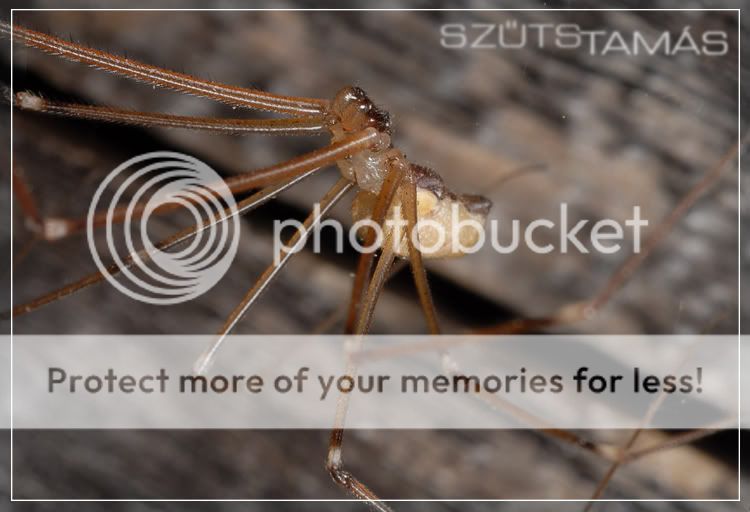 Pholcidae : likely Pholcus sp. 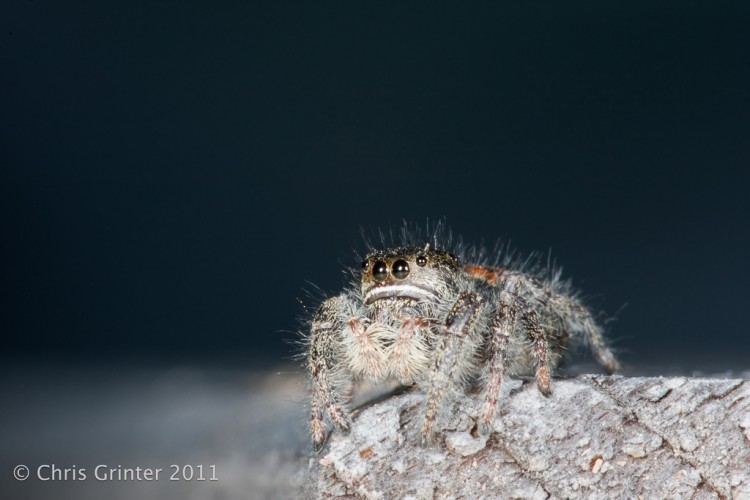 Salticidae: Phidippus sp. Continue reading Blue Oak Ranch Reserve
ໂດຍຄຣິດສ Grinter, ໃນເດືອນເມສາຄັ້ງທີ 6, 2011 ຕົກລົງ – ເປັນຄໍາແກ້ຕົວບໍ່ພໍເທົ່າໃດສໍາລັບການບໍ່ມີຮູບພາບອັນເຕັມທີ່ * ທັນ * ຂອງຕົວອ່ອນໃນຄໍາຖາມທີ່ວ່າ (ຂ້າພະເຈົ້າຈະຢູ່ໃນສອງສາມມື້!). ໃນໄລຍະທ້າຍອາທິດທີ່ຂ້າພະເຈົ້າໄດ້ມີກຸ່ມຂອງນັກຮຽນ Berkeley ກ່ຽວກັບການ Mount Hamilton ແລະຜູ້ຝຶກຫັດທີ່ປະລິນຍາເອກ Meghan Culpepper ເປັນການເກັບກໍາເປັນຊະນິດທີ່ບໍ່ຫຼາຍປານໃດຂອງ Scaphinotus ແລະຕົວອ່ອນບາງ! So the specimen from Monday was indeed the larvae of a Scaphinotus beetle feasting inside the shell of a native terrestrial snail. This challenge was a hard one since these predatory Scaphinotus larvae are rarely encountered and there are zero images of out there – and none of them feeding. Better luck next time!
For now, here is an undetermined Scaphinotus species. In the coming weeks I will have 4-5 species photographed and identified (by Meghan) – and the larvae will have to be sequenced for species ID. ຕິດຕາມຢູ່.
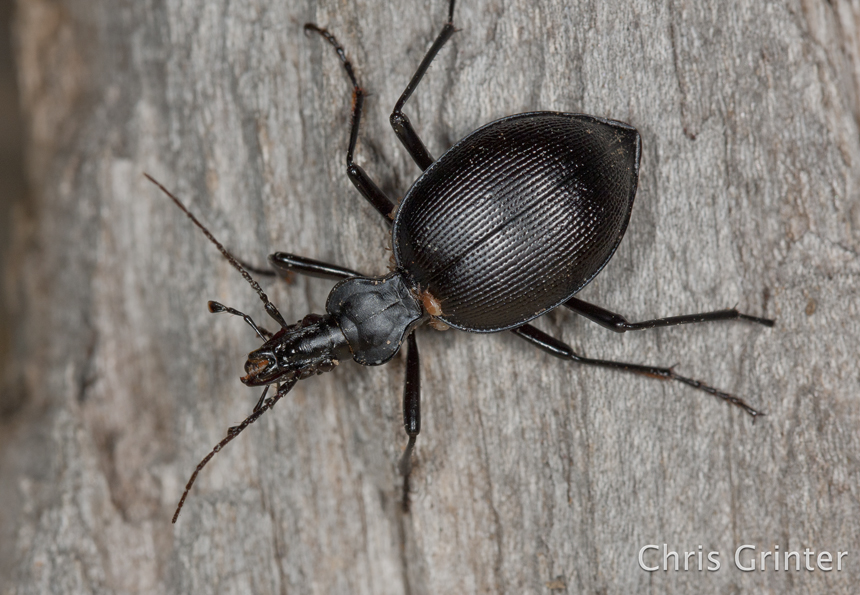
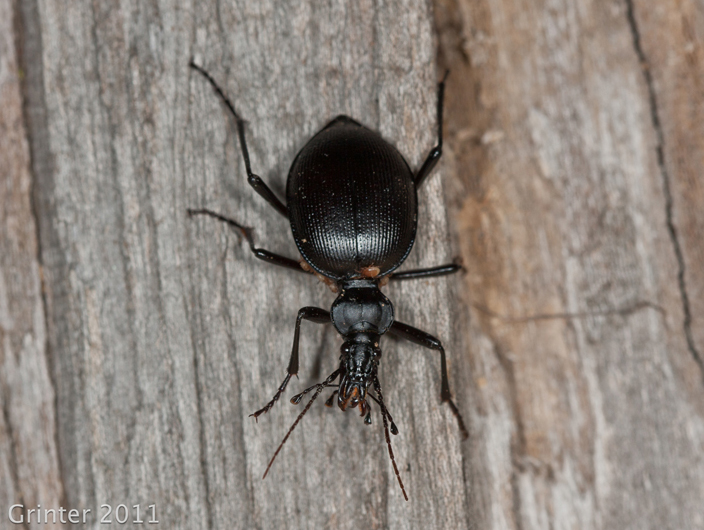
ໂດຍຄຣິດສ Grinter, ໃນວັນທີ 4 ເມສາ, 2011 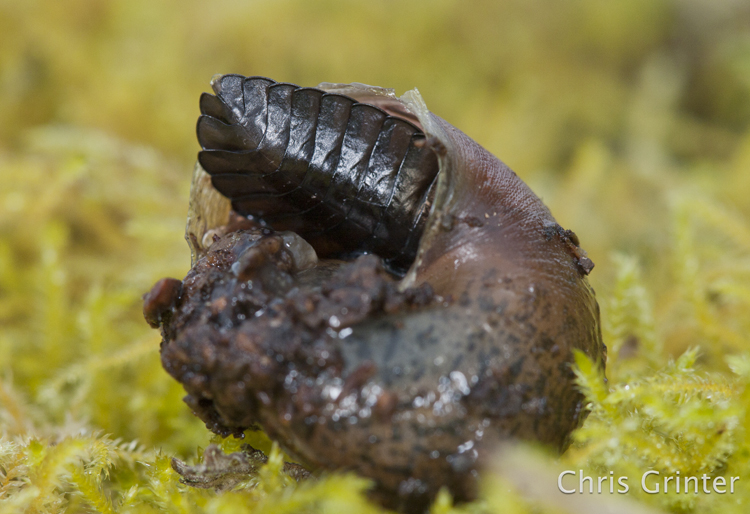
ໄດ້ພົບຊາຍຄົນນີ້ໃນຂະນະທີ່ອອກສະໜາມໃນມື້ອື່ນ, ມີຫຍັງເກີດຂຶ້ນຢູ່ນີ້? ຄະແນນທີ່ໄດ້ຮັບຮາງວັນສໍາລັບຄໍາສັ່ງ / ຄອບຄົວ / ປະເພດ – ແຕ່ເຖິງແມ່ນວ່າຜູ້ຊ່ຽວຊານໃນກຸ່ມນີ້ຍັງບໍ່ສາມາດຊອກຫາຊະນິດພັນໄດ້.
(ທຸກຄົນໃນພາກສະຫນາມກັບຂ້ອຍຄວນຖືຄໍາຄິດຄໍາເຫັນຂອງເຂົາເຈົ້າຈົນກ່ວາການຄາດເດົາເຂົ້າມາ!)
ໂດຍຄຣິດສ Grinter, ໃນວັນທີ 30 ເດືອນມີນາ, 2011 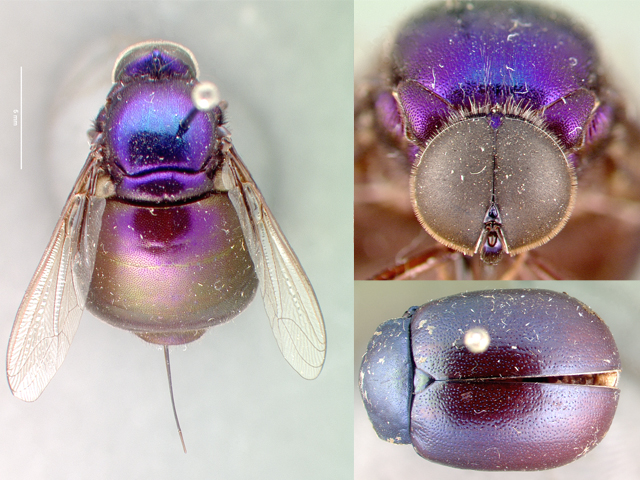 Glass klettii: ຮູບພາບໃນເດືອນເມສາ nobility, ກໍລະນີ Glass klettii: ຮູບພາບໃນເດືອນເມສາ nobility, ກໍລະນີ
ສໍາລັບການທີ່ມີແມງວັນສ່ວນຫນຶ່ງແມ່ນບໍ່ໄດ້ແມງໄມ້ທີ່ຂ້າພະເຈົ້າໄດ້ຮັບຄວາມຕື່ນເຕັ້ນກ່ຽວກັບການ overly. ຢ່າງໃດກໍຕາມ, ຄອບຄົວ Acroceridae enigmatic ມີຂໍ້ຍົກເວັ້ນໄດ້. ຂ້າພະເຈົ້າຈະເລີ່ມຕົ້ນການແລກປ່ຽນສະທີ່ຫນ້າສົນໃຈບາງຢ່າງຈາກທີ່ໃຊ້ເວລາກັບທີ່ໃຊ້ເວລາ – ຕົວຂອງຄອບຄົວແມ່ນມີຫຼາກຫຼາຍຊະນິດເຮັດໃຫ້ປະລາດ. Most of my days are spent at the museum inventorying our massive collection of over 16,000 Acorcerids (aka small-headed flies). That may not sound all too impressive when you compare it to other more abundant families (and it does pale in comparison to the over 17,500,000 other specimens we do have in the museum); but it turns out to represent many, if not most, ຂອງ ທັງຫມົດ known specimens for the entire family. While there are likely large assemblages of these flies in other institutions, the California Academy of Sciences can easily claim the record ever since receiving the collection of Dr. Evert I. Schlinger (who occasionally comes in to work from the museum).
Acrocerids turn out to be a rather difficult group to study because of how rare they are in nature, their parasitoid biology, and how difficult they can be to catch on the wing. Their large thorax is packed with muscles that rocket the fly through the air – so if you don’t catch them at a flower you’re left longing for a Malaise trap. Ev did tell me one story of learning to catch these on the wing in Costa Rica. You stand downwind from a colleague in the field – as soon as someone hears something zip past, you swing wildly hoping to snare the fly by chance… it does work every once in a while. These flies are also the only known endoparasites of adult spiders (there may be a record of a Tachinid…). The above genus, NeoLasia, is a parasite of Theraphosid tarantulas (something like Aphonopelma). As a larvae the fly works its way up the legs of a spider and burrows into the abdomen where it then settles in next to the book lung and pokes a little breathing hole. Then it waits patiently for the spider to near maturity. With female tarantulas, the fly could be dormant for decades. Eventually something akin to the movie Aliens happens and the larvae feeds on the internal organs of the spider then emerges to pupate. But figuring out whether or not a spider has a parasite is impossible without a dissection – so large collections of live spiders must be maintained to obtain host records. Parasitoid biology is just so cool.
The above specimen (Glass klettii a new, unnamed, ຊະນິດ) was collected in 1977 by Schlinger near the town of Alamos, ເມັກຊິໂກ – on flowers with the likely mimic model, a Chrysomelidae beetle (beetle people, any ideas beyond family?).
ໂດຍຄຣິດສ Grinter, ໃນວັນທີ 24 ມີນາ, 2011 Better be careful of what you do while out in the countryside. Farms can be dangerous places, especially if you’re a photographer. Proposed legislation in Florida, titled simply “farms”, is attempting to make photography or drawings in, on or ຂອງ a farm without explicit written consent a first degree FELONY (ເຖິງ 30 years in prison). What could possibly be the justification for this legislation? Journalist Barry Doyle suggests the good Senator is tightly in the pockets of Agribusiness – looking out for those poor farmers who are targeted by animal rights groups or even worse – human rights groups! I tend to concur, this legislation is a disgusting piece of corruption. It gets pretty bad:
(2) A person who photographs, video records, or otherwise produces images or pictorial records, digital or otherwise, at or of a farm or other property where legitimate agriculture operations are being conducted without the written consent of the owner, or an authorized representative of the owner, commits a felony of the first degree…
I strongly encourage any of my Florida readers to write to Senator Norman and express your absolute disgust in his legislation.
14031 N. Dale Mabry Blvd.
Tampa, FL 33618
(813) 265-6260
Senate VOIP: 41200
I also encourage everyone else everywhere else to write to your US representative and exclaim your outrage over this possible violation of first amendment rights (only a proposed violation at this moment).
And just for good measure, here is a bad cellphone picture I took while in Oregon with lots of farms.
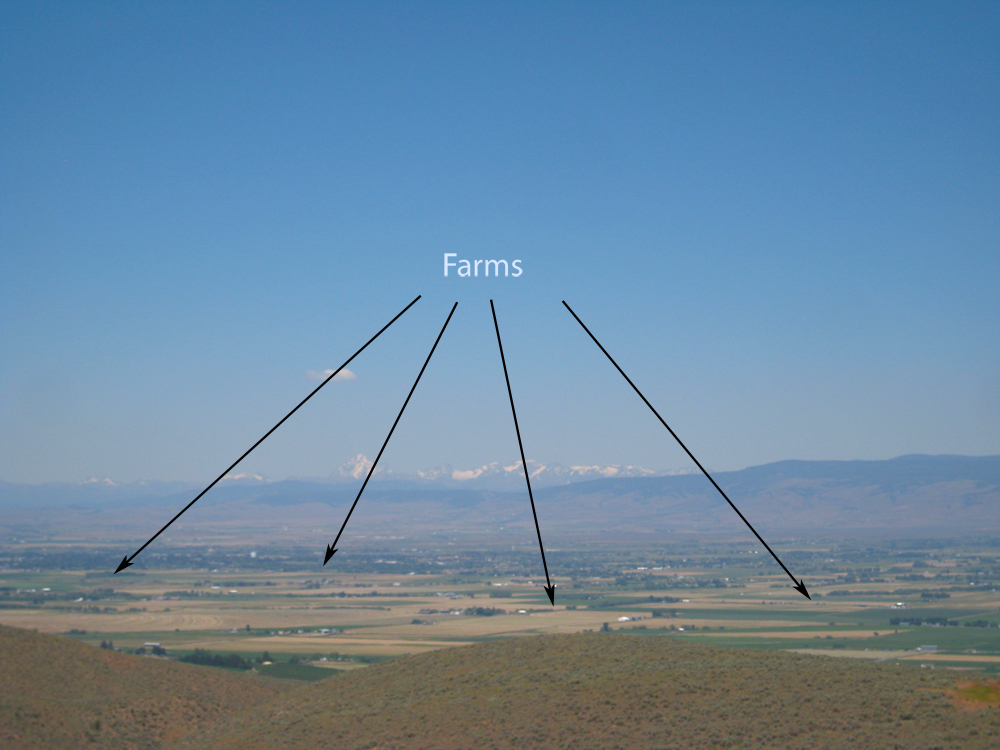
ໂດຍຄຣິດສ Grinter, ໃນເດືອນມີນາວັນທີ 22, 2011 ປົກກະຕິແລ້ວຂ້າພະເຈົ້າມາໃນທົ່ວບົດຄວາມ entomology ທີ່ຫນ້າຢ້ານເປັນປົກກະຕິພຽງພໍທີ່ຂ້າພະເຈົ້າຊ່ວຍປະຢັດ backlog ສໍາລັບຊຸດໃນອະນາຄົດ. ນີ້ບໍ່ໄດ້ເປັນກໍລະນີໃນໄລຍະສອງສາມອາທິດທີ່ຜ່ານມາ, ຂ້າພະເຈົ້າບໍ່ໄດ້ພົບເຫັນອາເຣປົກກະຕິຂອງສື່ມວນຊົນຂີ້ຮ້າຍ. ບາງທີຂ້າພະເຈົ້າພຽງແຕ່ໄດ້ຮັບການ jaded ແລະຢຸດເຊົາການເບິ່ງເປັນລະມັດລະວັງ – but this week I even came across a moth related correction from the Maui News. They fixed their error, but must have deleted the original article…
And for this week I found ບົດຄວາມນີ້ with the image below. Should be pretty easy to spot the weirdness (they do at least manage to point out that the moth is ບໍ່ the LBAM (light brown apple moth)).
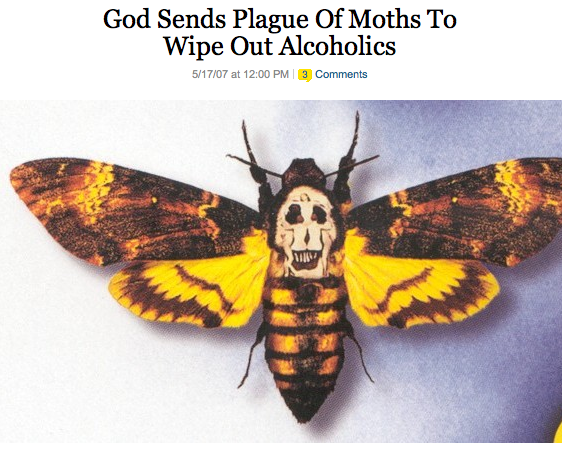
ໂດຍຄຣິດສ Grinter, ໃນເດືອນມີນາ 18, 2011 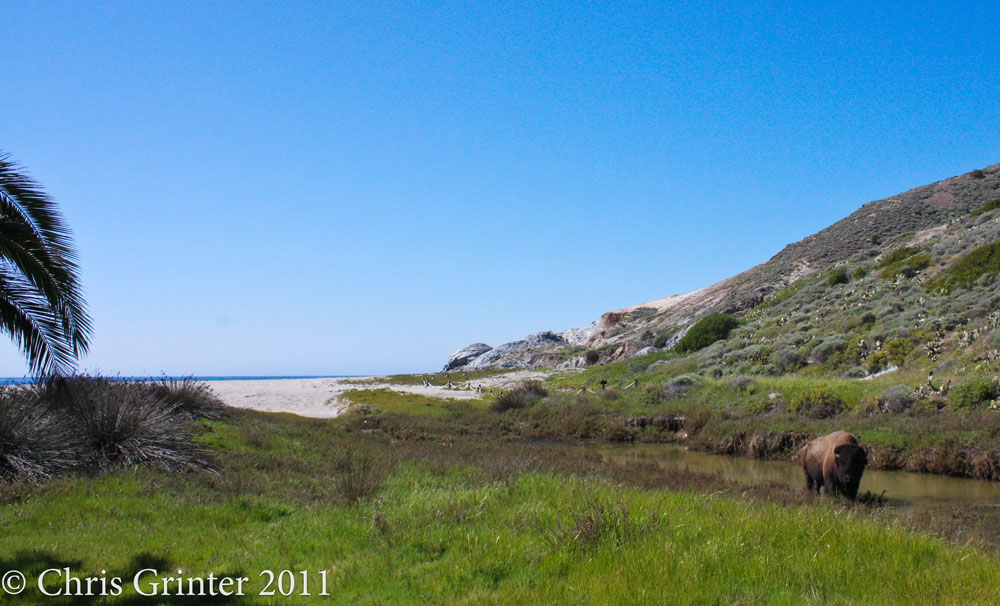
ບາງທີອາດມີສະຖານທີ່ພຽງແຕ່ໃນໂລກບ່ອນທີ່ທ່ານສາມາດຊອກຫາອາເມຣິກາ bison (ທຽບກັບ. ຄວາຍ) ຢືນຢູ່ໃກ້ກັບຫາດຊາຍທີ່ຕໍ່ໄປທີ່ຈະເປັນໄມ້ຢືນຕົ້ນປາມໄດ້ເປັນ. ອາທິດກ່ຽວກັບ Santa Catalina ແມ່ນເປັນຫນຶ່ງໃນສິ່ງມະຫັດ, ແລະເຖິງວ່າຈະມີພາກຮຽນ spring ເຢັນມີອາກາດຫນາວ unseasoned ເປັນຈໍານວນຫນ້ອຍ, ບາງຄົນເກັບກໍາ decent ໄດ້. ນີ້ແມ່ນພຽງແຕ່ຮູບພາບທີ່ມ່ວນຫຼາຍ ແລະເຈົ້າຈະສັງເກດເຫັນສິ່ງໜຶ່ງໃນທັນທີ: ບໍ່ມີທົ່ງນາຂອງດອກໄມ້ປ່າ! ຍ້ອນວ່າມັນຫັນອອກ, ແບ້ເກືອບຫນຶ່ງສະຕະວັດ, ທົ່ງຫຍ້າລ້ຽງໝູ ແລະ ງົວເຖິກໄດ້ປະໄວ້ສ່ວນຫຼາຍແມ່ນຫຍ້າ ແລະກະທຽມຢູ່ເທິງເກາະ. ໃນຈຸດຫນຶ່ງມີຫຼາຍກວ່າ 1000 bison ແລະຝູງແບ້ນັບບໍ່ຖ້ວນ; ມັນເປັນສິ່ງທີ່ແປກໃຈທີ່ມີຢູ່ລອດທັງຫມົດ! ໃນມື້ນີ້, ໂຊກດີທີ່ເຫຼືອພຽງແຕ່ງົວນ້ອຍປະມານ 200 ໂຕເທົ່ານັ້ນທີ່ຍັງຄວບຄຸມການເກີດ (ທ່ານເດົາມັນ, ທ່ານບໍ່ສາມາດຍິງສິ່ງທີ່ຮ້າຍກາດນັບຕັ້ງແຕ່ຄົນ “ຮັກ” ເຂົາເຈົ້າ – ຄືກັນກັບ eucalyptus ທີ່ໂງ່ທີ່ເຈົ້າບໍ່ສາມາດຕັດລົງໄດ້). ໃນ 1924 ໄດ້ຍິນສຽງງົວນ້ອຍຖືກນໍາໄປຖ່າຍຮູບເງົາ ອາເມລິກາທີ່ຫາຍສາບສູນ. ຕາມທໍາມະຊາດ, ໂຄງການໄດ້ເກີນງົບປະມານ, scene ໄດ້ ຖືກ ຕັດ ແລະ ສັດ ໄດ້ ຖືກ ປ່ອຍ ໃຫ້ ວ່າງ ແທນ ທີ່ ຈະ ເປັນ ການ ຈ່າຍ ເງິນ ເພື່ອ ໃຫ້ ເຂົາ ເຈົ້າ ກັບ ຄືນ ບ້ານ. 80 ປີຕໍ່ມາແລະເຈົ້າໄດ້ຖືກປະໄວ້ກັບເກາະທີ່ເຈົ້າສາມາດຕໍ່ສູ້ໄດ້ “ອະນຸລັກ” ແລະບໍ່ຟື້ນຟູ. ຄວາມຈິງທີ່ໂສກເສົ້າແມ່ນວ່າພວກເຮົາບໍ່ມີຂໍ້ຄຶດວ່າເກາະດັ່ງກ່າວເຄີຍເປັນແນວໃດ. ມັນຍັງສົມມຸດຖານວ່າ fox ເກາະ endemic (ທີ່ພວກເຮົາໄດ້ເຫັນ 6!) ໄດ້ຖືກເອົາມາໂດຍຊົນເຜົ່າພື້ນເມືອງເມື່ອບໍ່ເທົ່າໃດພັນປີກ່ອນຈາກເກາະໃກ້ຄຽງ. ຂ້າພະເຈົ້າຄິດວ່າມັນເປັນທໍາມະຊາດຂອງພວກເຮົາທີ່ຈະ mess ກັບສະພາບແວດລ້ອມຂອງພວກເຮົາ.
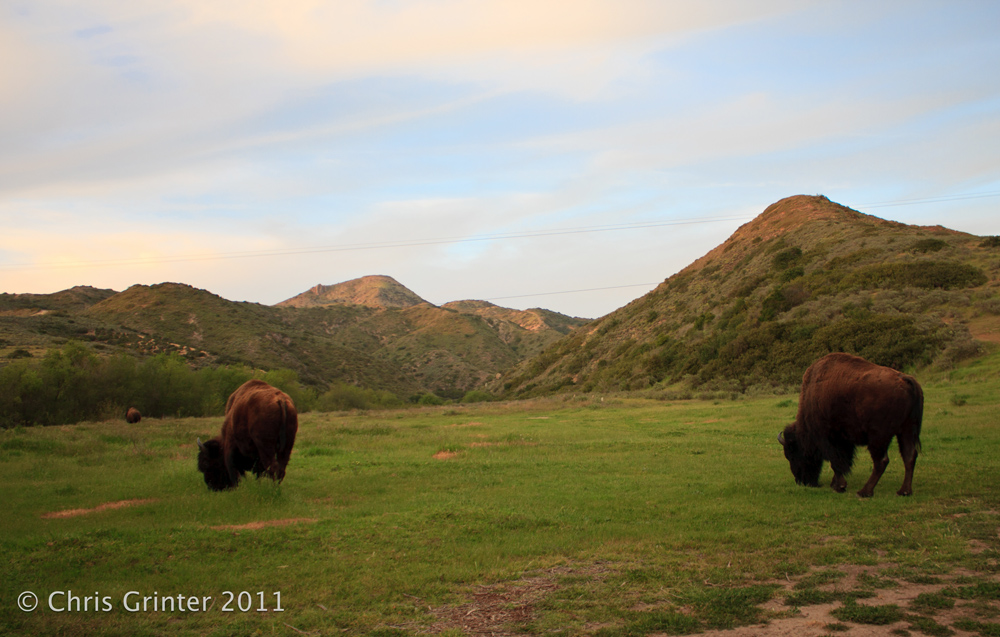
ໃນຂະນະທີ່ຂ້າພະເຈົ້າຖ່າຍຮູບຂ້າງເທິງ, ສັດຮ້າຍນີ້ຍ່າງຂຶ້ນຫລັງຂ້າພະເຈົ້າ. ມັນບໍ່ໄດ້ແລ່ນ, ຂ້ອຍເຄີຍ!
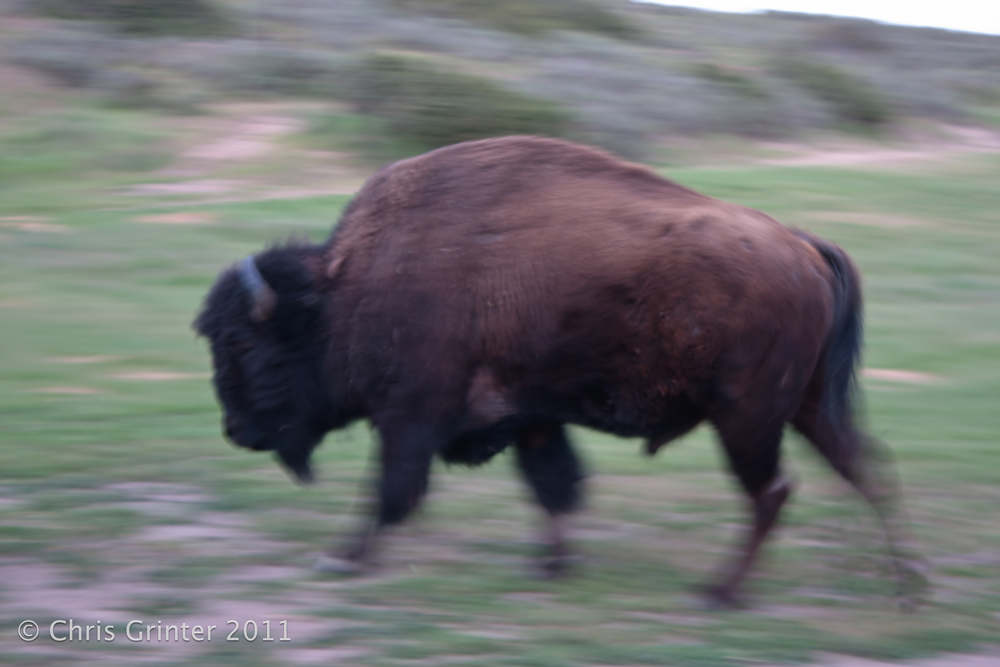
ໂດຍຄຣິດສ Grinter, ທີ 8 ເດືອນມີນາ, 2011 [cetsEmbedGmap src = http://maps.google.com/maps?ll = 33.393039, -118,416824&Spn = 0.359452,0.715485&t = h&z = 11 width = 600 ລະດັບຄວາມສູງ = 330 marginwidth = 0 marginheight = 0 frameborder = 0 ເລື່ອນ = ອັດຕະໂນມັດ]
ໃນຕອນເຊົ້າມື້ອື່ນຂ້າພະເຈົ້າໄປສໍາລັບການ 10 day collecting trip down to Catalina ເກາະ. ຂ້າພະເຈົ້າໄດ້ພົບພຽງພໍທີ່ຈະໄດ້ຮັບການເຊື້ອເຊີນໃຫ້ເຂົ້າຮ່ວມທ່ານດຣ. Jerry Powell ຂອງ UC Berkeley ກ່ຽວກັບການສໍາຫຼວດ moth ໄດ້, ແລະນີ້ຈະເປັນການໃຊ້ເວລາທໍາອິດທີ່ຂ້າພະເຈົ້າກັບການໃດໆຂອງເກາະດອນ. The Channel Islands are known for their high levels of endemism, and none is more famous than the Channel Island Fox. There are also a handful of endemic butterflies and moths that I’ll be hoping to find, but at the very least I know it’s wildflower season and I’ve got my camera primed.
I will likely have little or no access to the internet while staying on the island, so hang tight for a week. Had I planned ahead I would have scheduled posts or a guest author! Please do stay tuned for some of my first images of the 2011 field season.
ໂດຍຄຣິດສ Grinter, ໃນວັນທີ 3 ມີນາ, 2011 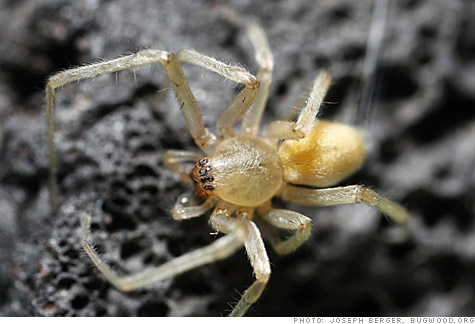
ປາກົດຂື້ນ something in the Mazda 6 fuel line is warm and inviting for the yellow sac spider, ພຽງພໍດັ່ງນັ້ນວ່າພວກເຂົາເຈົ້າກໍາລັງກໍ່ສ້າງໃນໄລຍະ webs ລະບົບ vent ຂອງ 4 ຍານພາຫະນະ cylinder (ແລະບໍ່ໄດ້ 6!). ບັນຫາດັ່ງກ່າວໄດ້ຖືກຖືວ່າເປັນ “ການລະບາດ spider” ໂດຍບໍລິສັດລົດ, and the clogged vent lines then can lead to a cracked gas tank and the possibility of a fire.
“A certain type of spider may weave a web in the evaporative canister vent line and this may cause a restriction of the line”
So far only 20 cases are confirmed, but this problem is prolific enough that it has lead to a recall of over 52,000 sedans! I think it’s high time the major car companies hire entomology consultants – after all, my retainer would be a lot less than the cost of that recall…
I consulted with our resident team of arachnologists here at the ກໍລະນີ, and the above image does appear to be a sac spider. It’s too hard to tell from the image, but it’s probably not an egregious taxonomic failure.
|
ບໍ່ຄ່ອຍເຊື່ອງ່າຍໆ
|














